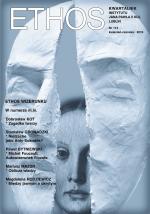Oblicza władzy. Graficzne i audiowizualne wizerunki pierwszych sekretarzy KC PPR/PZPR w Polsce Ludowej (1944-1989)
Faces of Power: Pictorial and Audiovisual Images of the First Secretaries of Polish Workers’ Party and the Polish United Workers’ Party in the People’s Republic of Poland (1944-1989)
Author(s): Mariusz MazurSubject(s): History, Fine Arts / Performing Arts, Visual Arts, Recent History (1900 till today), Post-War period (1950 - 1989)
Published by: Katolicki Uniwersytet Lubelski Jana Pawła II - Instytut Jana Pawła II, Wydział Filozofii
Keywords: First Secretaries of Polish Workers’ Party and the Polish United Workers’ Party; creation of an image; newsreel; portraits
Summary/Abstract: In Poland, the images of the First Secretaries of Polish Workers’ Party and the Polish United Workers’ Party were fake creations of the propaganda, and they assumed different shapes during the 45 years long period of the People’s Republic of Poland. The pictorial and audiovisual presentations were mere complements to the overall images of the politicians, expressing neither an ideological content nor axiological beliefs. For this reason the photographs alone do not offer insight into the political system or the ideas promoted in it and provide only the information on the outer appearance of individual politicians, their relationship to the social environment and the symbols that surrounded them. Much more knowledge, however, can be gained from the newsreels of the time. The paper analyses the images of seven subsequent First Secretaries. Some of them (Bierut, Gierek, Jaruzelski) created their images using persuasive and manipulative procedures. Others (Ochab, Kania, Rakowski) held the office for a short time and during political crises, which hindered their self-promotion. Some regarded the creation of a positive image as important (Bierut, Gierek), others accepted it under compulsion (Jaruzelski), while e.g. Gomułka seemed uninterested in his image. The means and methods adopted to create images of politicians changed together with the development of information media. However, many of the conventions were applied to all politicians, while many were—and still are—used regardless of the political system, be it totalitarianism, authoritarianism or democracy.
Journal: Ethos. Kwartalnik Instytutu Jana Pawła II KUL
- Issue Year: 29/2016
- Issue No: 2
- Page Range: 218-242
- Page Count: 25
- Language: Polish
- Content File-PDF

